Setting Sail with Safety in Mind
This boating safety equipment checklist covers eight essential tools to help prevent accidents and ensure a safe return to shore. From fueling solutions to emergency beacons, this list provides a quick reference for recreational boat owners, professional captains, and anyone enjoying time on the water. Knowing you have the right equipment onboard provides peace of mind and can be lifesaving in an emergency. This checklist covers CLiX Fueling Solutions, Personal Flotation Devices (PFDs), Marine VHF Radio, Fire Extinguishers, Emergency Position Indicating Radio Beacon (EPIRB), Navigation Lights, Sound Signaling Devices, and Visual Distress Signals.
1. CLiX Fueling Solutions
When compiling a boating safety equipment checklist, don't overlook the importance of safe and efficient fueling. CLiX Fueling Solutions offers a significant upgrade to traditional fueling methods, enhancing both safety and environmental responsibility. This innovative system helps prevent dangerous and costly fuel spills by automatically stopping the flow of fuel once your tank is full. This eliminates the guesswork and stress associated with manually gauging fuel levels, a common challenge for many boaters.
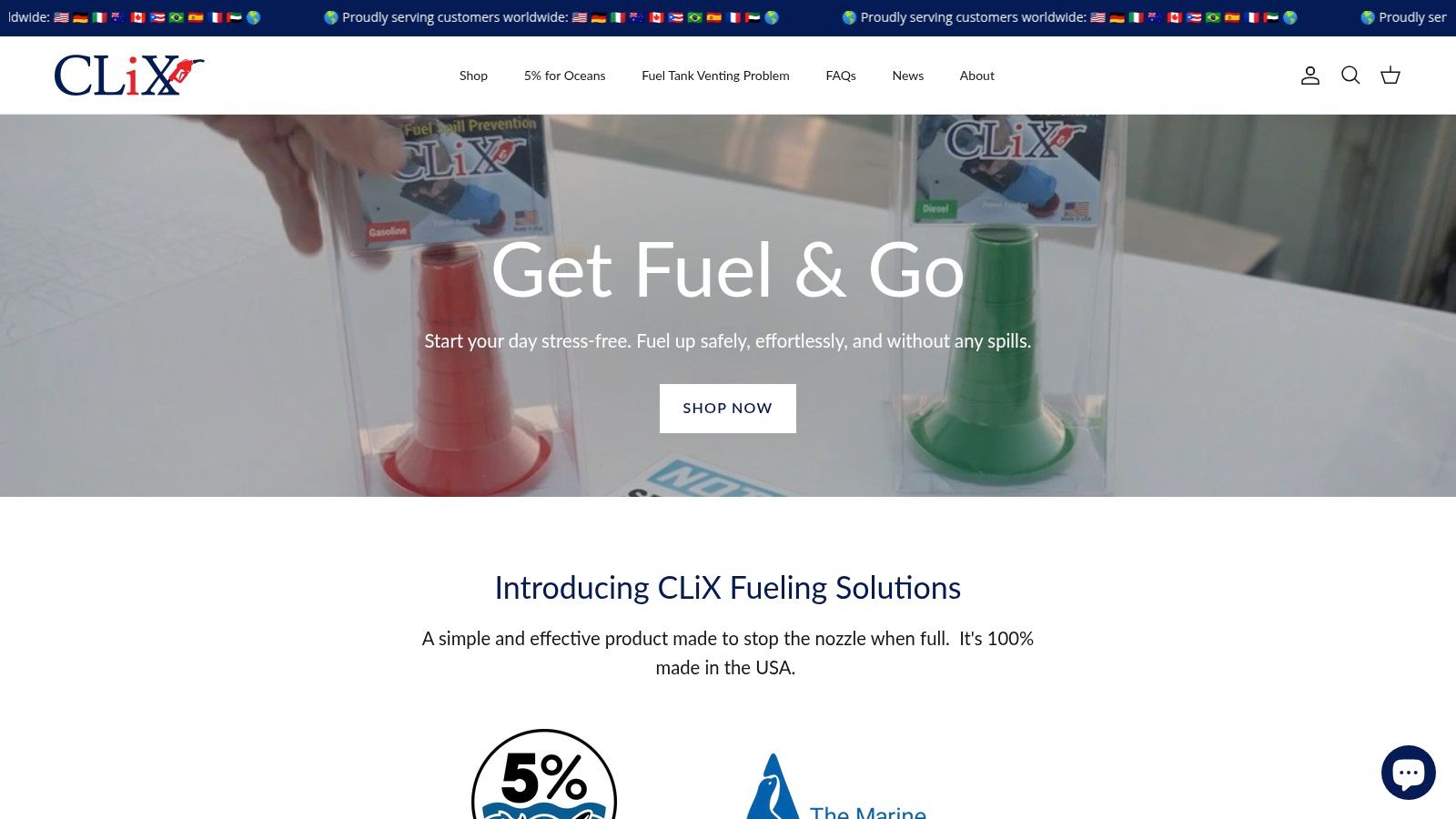
CLiX Fueling Solutions is designed to protect both your vessel and the marine environment. By preventing overfills, it safeguards expensive boat equipment from fuel damage and minimizes the risk of hazardous leaks that can pollute our waterways. Manufactured entirely in the USA, CLiX is available in both diesel and gasoline models, catering to the needs of a wide range of boat owners, from recreational boaters and anglers to professional fleet captains and marina operators. Even sailors benefit from the peace of mind this system provides. The system's ease of use makes it a valuable addition to any boating safety equipment checklist.
Features and Benefits:
- Automatic Shut-Off: The core feature of CLiX is its automatic shut-off functionality. This prevents overfilling and spills, saving you money on wasted fuel and protecting your boat and the environment.
- Protects Boat Equipment: By preventing fuel spills, CLiX protects your boat's sensitive equipment from damage, reducing the need for costly repairs.
- Environmentally Friendly: CLiX promotes environmental sustainability by preventing hazardous fuel leaks that can harm marine ecosystems.
- User-Friendly: The system is designed for easy installation and use, making fueling a stress-free process.
- Made in the USA: CLiX Fueling Solutions is manufactured entirely in the United States.
Pros:
- Automatic shut-off feature prevents overfilling and fuel spills
- Protects expensive boat equipment from fuel damage
- 100% USA-made with diesel and gas model options
- Promotes environmental sustainability by preventing hazardous leaks
- Highly praised by professional captains and recreational boaters for reliability
Cons:
- Limited to diesel and gasoline models; may not cover alternative fuel types.
- Pricing details not publicly listed, requiring direct inquiry for cost information.
While pricing isn't readily available on the website, the benefits of CLiX in terms of safety, environmental protection, and long-term cost savings make it worth investigating. Learn more about CLiX Fueling Solutions and consider contacting them directly for pricing and specific model information. This simple, yet effective, device deserves a spot on every boater's safety equipment checklist, contributing to a safer and cleaner boating experience for everyone. You can find helpful tips on boat fuel tank safety and maintenance in their articles. Including CLiX Fueling Solutions in your boating safety equipment checklist is a smart investment for both your vessel and the environment. Visit the CLiX Fueling Solutions website to learn more.
2. Personal Flotation Devices (PFDs)
Personal Flotation Devices (PFDs), commonly known as life jackets, are a non-negotiable component of any boating safety equipment checklist. They are not just recommended; they are required by law for every person on board a recreational vessel. PFDs are your first line of defense against drowning, and ensuring you have the right type and fit for everyone on board is crucial for a safe boating experience. Prioritizing PFDs in your boating safety equipment checklist can be the difference between a near miss and a tragedy.
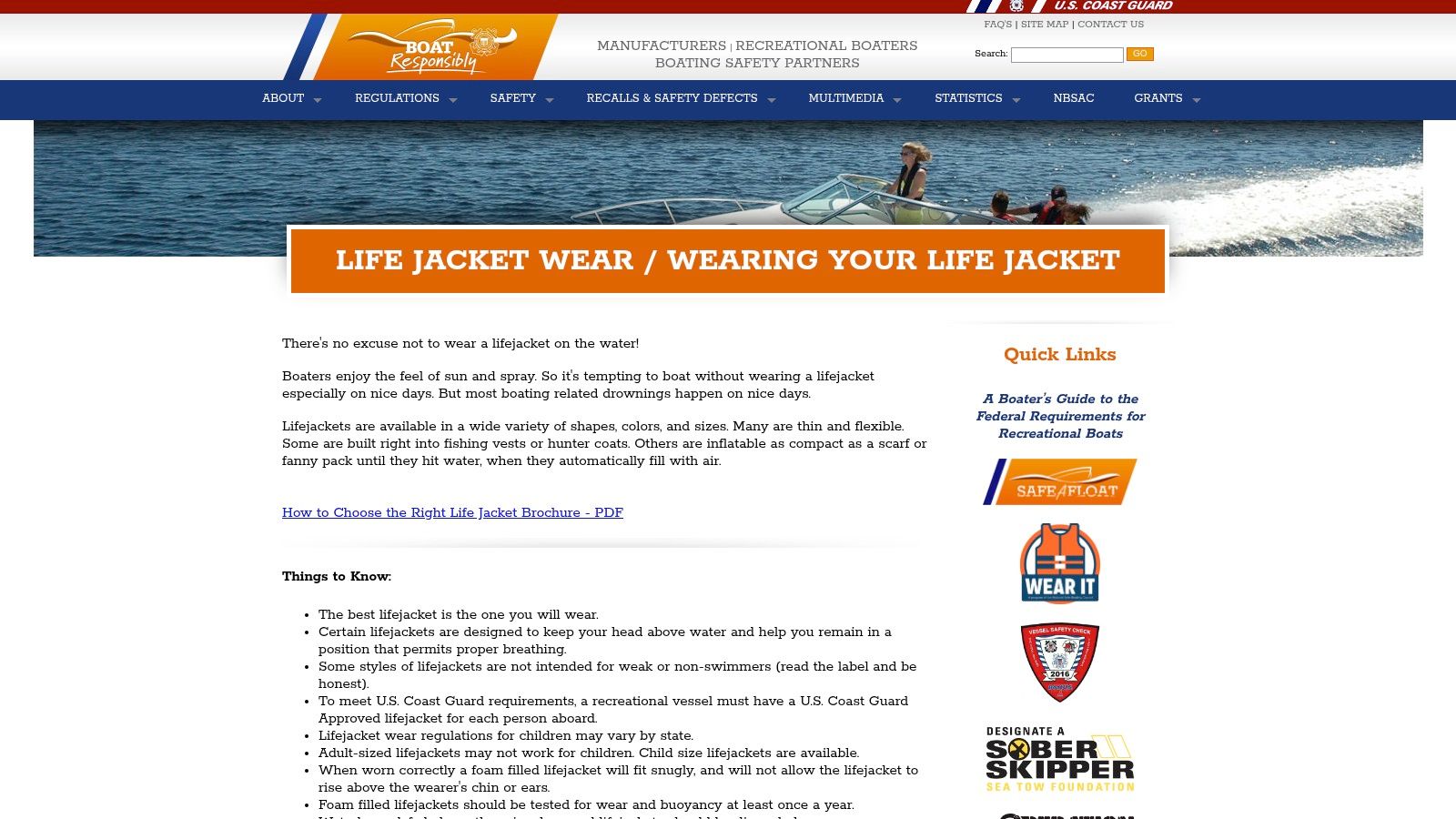
Modern PFDs are designed for comfort and performance, a far cry from the bulky, uncomfortable life preservers of the past. They come in various types (Type I through V) categorized by their buoyancy and intended use. Type I offshore life jackets provide the most buoyancy and are designed for rough waters where rescue may be delayed. Type II near-shore buoyant vests are suitable for calmer waters where quicker rescue is likely. Type III flotation aids are good for supervised activities like waterskiing and offer greater freedom of movement. Type IV throwable devices, like cushions or rings, are meant to be thrown to someone in the water and are not meant for continuous wear. Type V special use devices are designed for specific activities like kayaking or sailing and must be worn to be effective.
Choosing the right PFD involves considering the age and size of the wearer, the type of boating activity, and the water conditions. Children and infants require properly fitted child and infant PFDs. For adults, inflatable PFDs offer a comfortable, less bulky option for all-day wear, automatically inflating upon submersion or manually inflated when needed. Many PFDs incorporate features like bright colors, reflective material, and whistles to aid in visibility and signaling during an emergency. Prices can range from around $20 for basic foam PFDs to over $100 for advanced inflatable models.
Pros:
- Life-saving: PFDs can prevent drowning, even if the wearer is unconscious.
- Comfortable and Mobile: Modern designs allow for a greater range of motion than older styles.
- Automatic Inflation: Some models automatically inflate when submerged, providing added safety.
- Specialized Designs: PFDs are available for specific activities like kayaking and sailing.
Cons:
- Proper Fit and Maintenance: PFDs must be properly fitted and regularly inspected.
- Cost: Quality PFDs can be an investment.
- Resistance to Wear: Some boaters resist wearing PFDs due to perceived discomfort.
- Inflatable Maintenance: Inflatable models require periodic inspection and rearming.
Implementing PFDs into your boating routine is straightforward. Ensure everyone on board has a properly fitted PFD and understands how to use it. For inflatable models, check the inflation mechanism and expiration date regularly. Store PFDs in a readily accessible location and encourage everyone to wear them at all times while on the water. The U.S. Coast Guard provides valuable resources on PFD selection and use at https://www.uscgboating.org/recreational-boaters/life-jacket-wear-wearing-your-life-jacket.php. Including PFDs in your boating safety equipment checklist is not just a legal requirement; it's a fundamental step in ensuring the safety and well-being of everyone on board.
3. Marine VHF Radio
A crucial piece of equipment in any boating safety equipment checklist, the Marine VHF radio is your lifeline on the water. Unlike cell phones, which can quickly lose service offshore, a VHF radio provides reliable communication with the Coast Guard, other vessels, and onshore assistance. This makes it invaluable in emergencies, allowing you to call for help and provide your precise location. It’s also essential for staying updated on weather conditions and navigating safely in busy waterways.
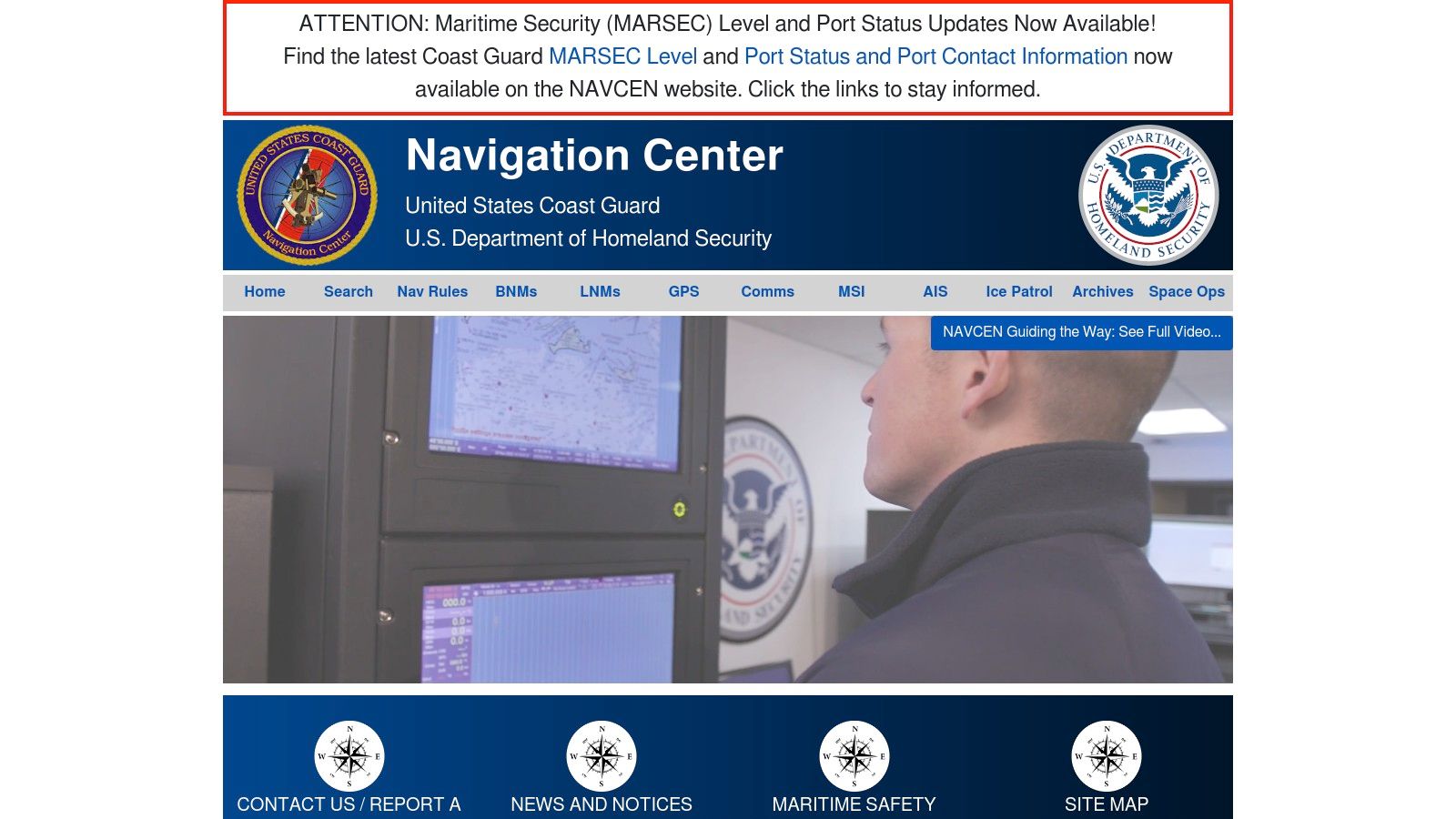
Imagine you're several miles offshore when a sudden storm rolls in. Your cell phone has no signal. With a VHF radio, you can monitor weather channels for updates from NOAA, communicate with nearby boats, and if necessary, send a distress call to the Coast Guard. This immediate access to communication can be the difference between a minor inconvenience and a serious emergency.
VHF radios come in two main types: fixed-mount and handheld. Fixed-mount units, typically boasting 25 watts of power, offer greater range and are ideal for larger vessels. Handheld VHF radios, with around 5 watts, are more portable and serve as a backup communication solution or as the primary radio for smaller boats. Both types now include Digital Selective Calling (DSC), which, when connected to a GPS, transmits your exact location along with your distress call, significantly speeding up rescue efforts.
Features:
- Channel 16: Dedicated emergency frequency for distress calls and urgent communications. Monitoring this channel is crucial.
- DSC (Digital Selective Calling): Enables one-button distress calls with GPS position transmission to the Coast Guard and other DSC-equipped vessels.
- Weather Alert Channels: Provide real-time NOAA weather forecasts and alerts directly to your radio.
- Waterproof Construction: Look for an IPX7 rating or higher to ensure your radio can withstand harsh marine environments.
- GPS Integration: Some models include built-in GPS or can be connected to external GPS devices for enhanced DSC functionality and navigation.
Pros:
- More Reliable Offshore: Unlike cell phones, VHF radio signals are designed for marine environments and offer better range offshore.
- Direct Communication with Rescue Services: Provides a direct link to the Coast Guard and other rescue agencies.
- Real-time Weather Updates: Keeps you informed about changing weather conditions, helping you make safe boating decisions.
- Communication with Nearby Vessels: Enables communication with other boats for assistance, navigation information, or social purposes.
Cons:
- Requires Proper Radio Protocols: Understanding proper radio etiquette and procedures is essential for effective communication.
- Limited Range: VHF radio range is typically 5-30 miles, depending on antenna height and other factors.
- Fixed Mounts Require Installation: Fixed-mount units require professional installation and wiring.
- MMSI Number Required for DSC: To utilize the DSC functionality, you'll need to register your radio and obtain a Maritime Mobile Service Identity (MMSI) number.
Pricing: Handheld VHF radios start around $100, while fixed-mount units range from $200 to $500 or more depending on features and capabilities.
Implementation Tip: Before venturing out, familiarize yourself with your VHF radio's features and practice making calls. Regularly check the radio's battery charge (for handhelds) and ensure your fixed-mount unit is functioning correctly. Learn proper radio protocols and obtain your MMSI number if you have DSC capability.
For more information on VHF radio regulations and usage, visit the U.S. Coast Guard Navigation Center: https://www.navcen.uscg.gov/?pageName=mtVhf
Having a functioning Marine VHF radio on board and understanding how to use it is an essential part of responsible boating. It significantly enhances your safety and allows you to enjoy your time on the water with peace of mind. This justifies its inclusion in every boating safety equipment checklist.
4. Fire Extinguishers
A critical component of any boating safety equipment checklist, fire extinguishers are indispensable for preventing small sparks from turning into devastating infernos. Boat fires, given the confined spaces and presence of flammable materials, can spread with alarming speed. Having the right fire extinguisher readily available can mean the difference between a minor incident and a catastrophic loss. This is why they earn a crucial spot on your boating safety equipment checklist.
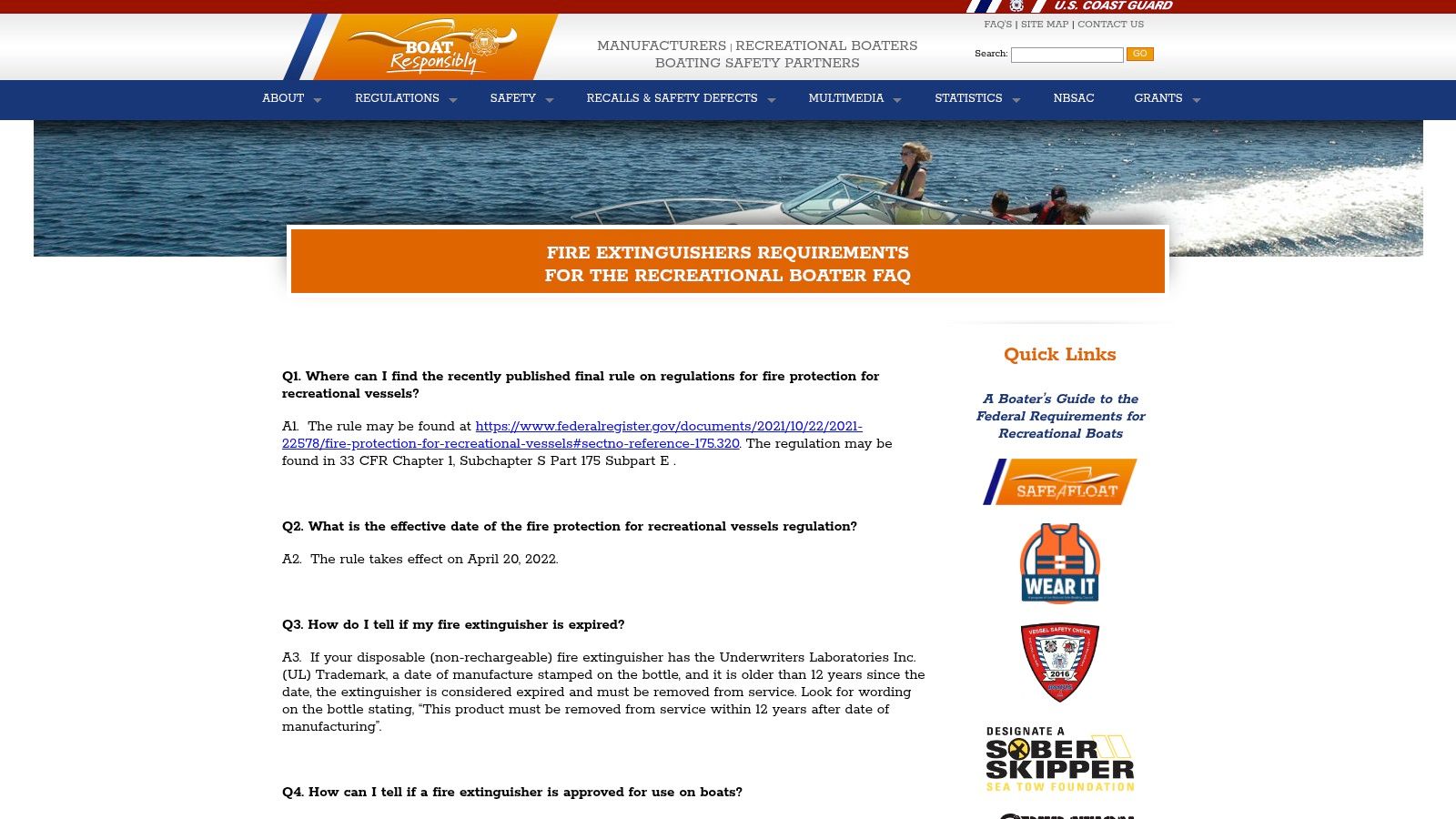
The U.S. Coast Guard mandates that boats with enclosed engine compartments, enclosed living spaces, or permanent fuel tanks carry approved marine-rated fire extinguishers. These extinguishers are specifically designed to withstand the harsh saltwater environment and combat multiple types of fires, typically B (flammable liquids) and C (electrical). Most boats will require at minimum a B-1 rated extinguisher, but the exact number and rating required depend on the vessel's size and configuration. You can consult the U.S. Coast Guard's website (https://www.uscgboating.org/recreational-boaters/fire-extinguisher-faq.php) for detailed information.
Marine-rated fire extinguishers come in various sizes and capacities, from compact models suitable for smaller vessels to larger units for bigger boats. Features like mounting brackets ensure secure storage and quick accessibility in emergencies. While disposable models require no maintenance beyond regular inspections, rechargeable extinguishers need periodic servicing. Prices vary depending on size and type, typically ranging from $20 to $100+.
Pros:
- Rapid Response: Fire extinguishers can prevent catastrophic damage if used promptly and correctly.
- Engine Fire Suppression: Critical for tackling engine fires, a common occurrence in boats.
- Compact Options: Smaller extinguishers are readily available for smaller boats and personal watercraft.
- Ease of Use: Most models are relatively simple to operate, even under pressure.
Cons:
- Limited Discharge Time: Most extinguishers have a discharge time of only 8-12 seconds.
- Inspection & Replacement: Regular inspections and eventual replacement are necessary.
- Potential Damage: Dry chemical extinguishers can damage electronics and engines if discharged.
- Windy Conditions: Effectiveness can be reduced in strong winds.
Implementation tip: Ensure your fire extinguishers are readily accessible and that everyone on board knows their locations and how to use them. Regular fire drills are recommended. Learn more about Fire Extinguishers for additional safety guidelines within the marina environment. This is crucial for both recreational boat owners and professional fleet captains as it contributes to overall boating safety.
By including fire extinguishers in your boating safety equipment checklist, you're taking a proactive step towards protecting your vessel, passengers, and the marine environment.
5. Emergency Position Indicating Radio Beacon (EPIRB)
When it comes to boating safety equipment, an Emergency Position Indicating Radio Beacon (EPIRB) stands as a critical piece of your survival kit, earning its spot on any comprehensive boating safety equipment checklist. This isn't just another gadget; it's a potential lifesaver in dire situations. Imagine finding yourself adrift miles offshore after a sudden storm or vessel malfunction. Cell service is nonexistent, and your VHF radio's range is limited. This is where the EPIRB becomes your lifeline. Activating it alerts search and rescue services worldwide via satellite, pinpointing your location and initiating a rescue operation.
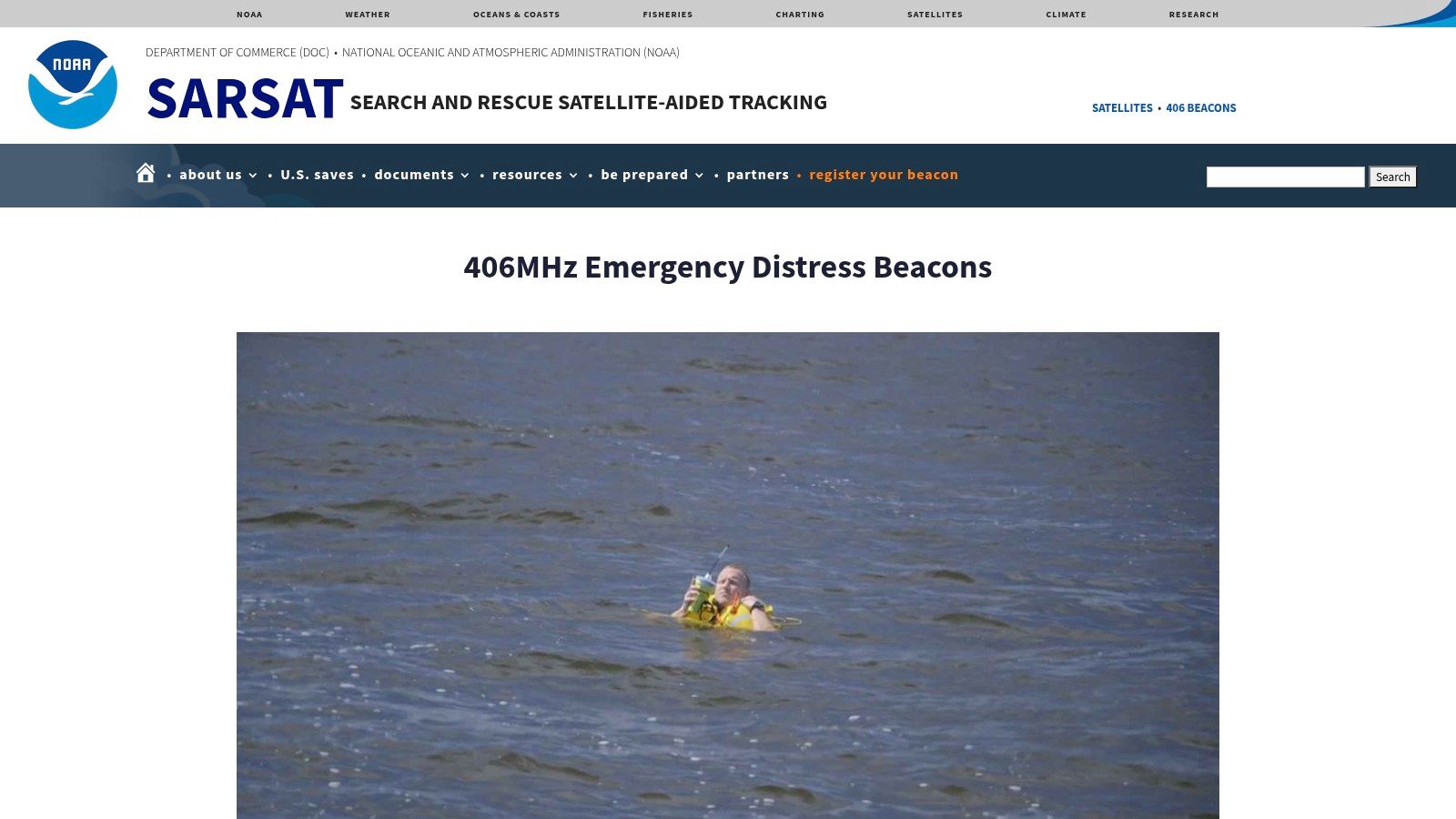
Modern EPIRBs operate on the 406 MHz frequency, monitored by the COSPAS-SARSAT international satellite system. This provides global coverage, meaning you can rely on it whether you're coastal cruising or venturing far offshore. GPS-equipped models further enhance accuracy by transmitting precise location coordinates, significantly reducing search time. These devices are designed to be rugged and reliable, with waterproof and buoyant construction ensuring they function even in harsh maritime environments. They're self-contained and capable of operating autonomously for at least 48 hours, and Category I EPIRBs even automatically deploy and activate when submerged.
Features and Benefits:
- Global Coverage: Communicates with satellites for worldwide coverage, unlike VHF radios with limited range.
- Precise Location: GPS-equipped models provide accurate coordinates for rapid rescue.
- Durability: Waterproof and buoyant design ensures operation even in challenging conditions.
- Extended Battery Life: Operates for a minimum of 48 hours after activation.
- Automatic Deployment (Category I): Automatically activates upon submersion, vital in capsizing situations.
- Increased Visibility: Some models include strobe lights for enhanced visibility at night.
Pros and Cons:
Pros:
- Functions where other communication methods fail.
- No subscription fees for the basic service.
- High rescue success rate.
- Enhanced nighttime visibility with integrated strobe lights (some models).
Cons:
- Significant upfront cost ($200 - $1000+).
- Requires registration with NOAA (in the United States).
- Battery replacement every 5-10 years.
- Accidental activation can trigger costly rescue operations.
Implementation and Setup:
Once you've purchased an EPIRB, register it with the appropriate national authority (NOAA in the U.S. - https://www.sarsat.noaa.gov/emerbcns.html). This links the beacon's unique identifier to your vessel and contact information, enabling rescuers to quickly identify you and your boat. Familiarize yourself with the activation procedures and regularly inspect your EPIRB to ensure it's in good working order. Store it in an easily accessible location, ideally in a dedicated bracket, and inform your crew about its location and operation.
While a personal locator beacon (PLB) might seem like a less expensive alternative, it's crucial to understand that PLBs are designed for individual use and lack the automatic deployment features found in some EPIRBs, making EPIRBs the preferred choice for boating safety.
Including an EPIRB in your boating safety equipment checklist is a non-negotiable aspect of responsible boat ownership. It's an investment in your safety and peace of mind, providing a critical link to rescue services in the face of unforeseen emergencies. Whether you’re a recreational boat owner, professional fleet captain, or simply a boating enthusiast, an EPIRB should be considered an essential part of your on-the-water preparedness.
6. Navigation Lights
Navigation lights are a crucial part of any boating safety equipment checklist, legally required for boats operating between sunset and sunrise or in reduced visibility. They are essential for preventing collisions by allowing other vessels to see your boat and understand its size, direction of travel, and activity. Including them in your boating safety equipment checklist is not just a legal requirement; it's a fundamental step towards ensuring your safety and the safety of others on the water.
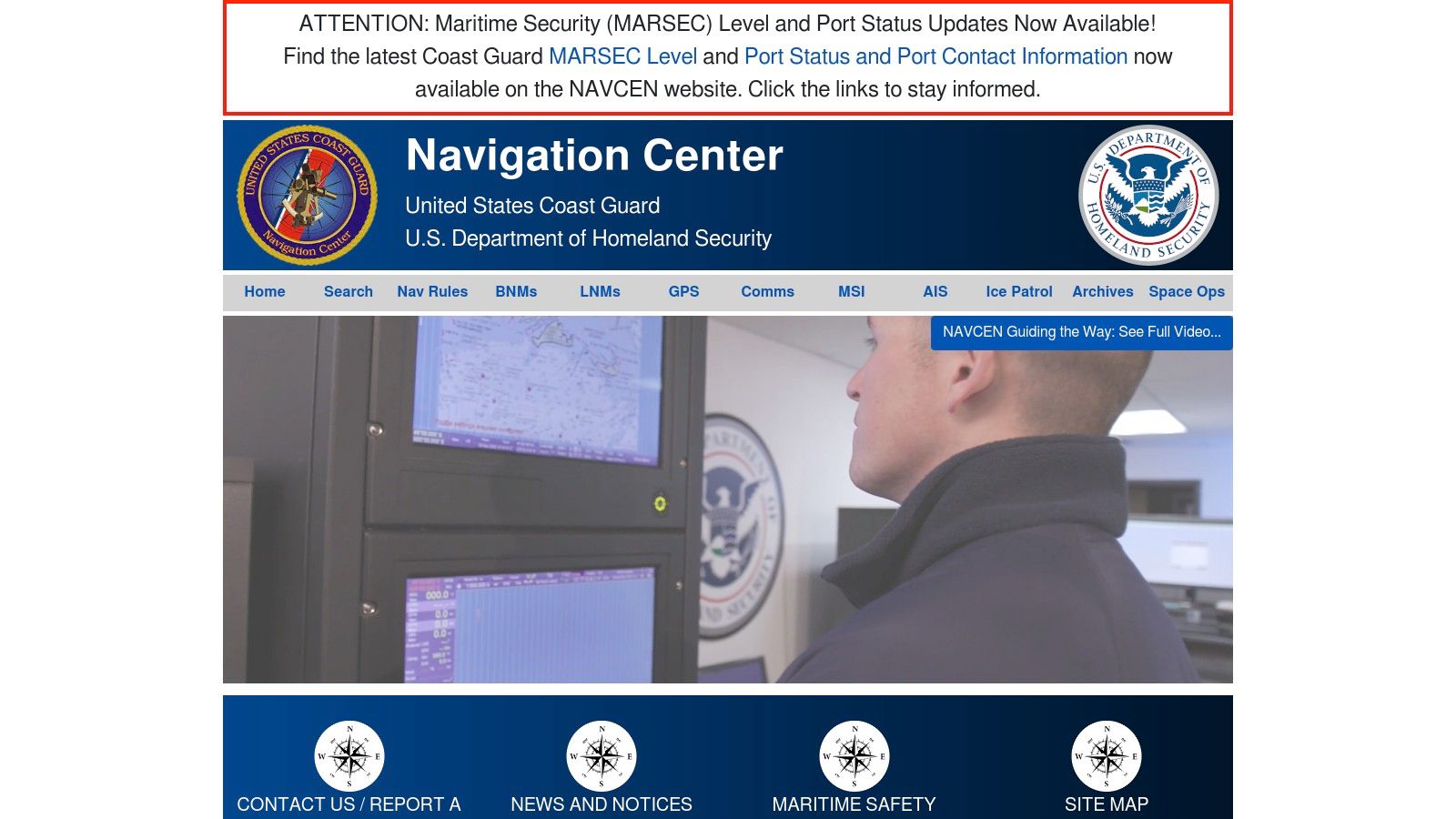
These lights communicate vital information in the dark or fog. The system uses a combination of colored lights: red and green sidelights indicate port (left) and starboard (right) respectively, a white stern light shows the rear of the vessel, and a white masthead light (for powerboats over a certain length) indicates the vessel's centerline. This configuration allows other boaters to quickly assess your boat's course and avoid potential collisions. Proper installation and maintenance of these lights, according to Coast Guard-approved configurations, is paramount for their effectiveness. You can learn more about Navigation Lights to understand the specific requirements for your vessel.
Features like LED options offer significant advantages in terms of energy efficiency and brightness, maximizing visibility and minimizing battery drain. Waterproof construction is essential for durability in harsh marine environments. Look for color-specific lenses designed for proper identification and visibility at the distances required for your boat's size. Some modern navigation lights even include automatic sensors for dusk activation, adding an extra layer of convenience and ensuring your lights are always ready when needed.
Pros:
- Critical for night-time collision avoidance: This is their primary function and makes them a vital piece of safety equipment.
- LED models draw minimal battery power: Conserving battery power is important, especially for extended trips or emergencies.
- Modern versions offer long service life: Durable construction ensures reliable performance over time.
- Some include automatic sensors for dusk activation: Added convenience for boaters.
Cons:
- Require regular testing and maintenance: Regular checks ensure the lights are functioning correctly.
- Must be installed in precise configurations: Improper installation can lead to confusion and accidents.
- Can be damaged by impact or weather exposure: Choose durable, marine-grade lights for best results.
- Quality marine-grade lights can be expensive: While cost is a factor, the safety benefits outweigh the investment.
While pricing varies depending on features and quality, expect to invest in proper marine-grade navigation lights. Refer to the U.S. Coast Guard's navigation rules website (https://www.navcen.uscg.gov/?pageName=navRulesContent) for comprehensive information on regulations and requirements for your specific vessel type and size. Implementing these lights correctly ensures not only your compliance with the law but significantly contributes to a safer boating environment for everyone.
7. Sound Signaling Devices: Be Heard on the Water
Sound signaling devices are a crucial part of any boating safety equipment checklist, ensuring your safety and the safety of others on the water. Federal regulations mandate that all vessels carry a means of making an efficient sound signal, making this a non-negotiable item for recreational boat owners, professional fleet captains, marina operators, and anyone else operating a vessel. This isn't just a box to check; it's a vital tool for communication and safety.
Why are sound signals so important? Imagine navigating through thick fog, or alerting another vessel to your presence in a busy channel. Sound signals are your voice on the water, enabling you to communicate your intentions, signal distress, and navigate safely in limited visibility. Whether you're an angler, sailor, or professional captain, understanding and utilizing proper sound signals is essential for responsible boating.
Types and Requirements:
The type of sound signaling device required depends primarily on the size of your boat.
-
Vessels Under 39.4 Feet (12 Meters): For smaller vessels, a simple hand-held whistle, horn, or bell is generally sufficient. Portable air horns are a popular option, providing a loud and effective signal without requiring a fixed installation.
-
Vessels Over 39.4 Feet (12 Meters): Larger vessels have more stringent requirements, often necessitating power-operated air horns or whistles. These devices must meet specific decibel and frequency requirements to ensure they are audible at greater distances. Consult the U.S. Coast Guard regulations (33 CFR 83) for detailed specifications.
Features and Benefits:
- Audible at Required Distances: Sound signals must be audible for at least 1/2 mile for smaller vessels, with greater distances required for larger vessels.
- Weather-Resistant Construction: Durability is key. Look for devices built to withstand the harsh marine environment.
- Portability: Handheld whistles and air horns offer convenient portability for small craft and emergencies.
- Multiple Tone Options (Some Models): Some electronic horns offer multiple tone options for different signaling purposes.
- Compliance with Regulations: Ensure your chosen device complies with 33 CFR 83 navigation rules.
Pros:
- Essential Communication: Vital for communicating with other vessels, especially in limited visibility.
- Distress Signaling: Can be used to signal distress in emergencies.
- Portable Options Available: Compact and easy to store.
- Low Maintenance: Most sound signaling devices require minimal maintenance.
Cons:
- Compressed Air Depletion: Compressed air horns can deplete with use and require refills.
- Power Requirements: Electric horns require a boat power connection.
- Audibility Limitations: Effectiveness can be reduced in high wind or heavy wave conditions.
- Signal Patterns: Boaters must learn and understand the proper sound signal patterns.
Implementation Tip:
Don't just keep your sound signaling device stowed away. Familiarize yourself with its operation and practice using it. Learn the different sound signals for various situations, such as overtaking, meeting head-on, and signaling distress. This knowledge is crucial for effective communication on the water.
Pricing:
Pricing for sound signaling devices ranges from a few dollars for a basic whistle to several hundred dollars for powerful electric horns.
Website: For more information on navigation rules and sound signal requirements, visit the U.S. Coast Guard's website: https://www.uscgboating.org/recreational-boaters/navigation-rules.php
Including sound signaling devices in your boating safety equipment checklist is not merely about complying with regulations; it's about prioritizing safe and responsible boating practices. By understanding the importance of sound signals and choosing the right device for your vessel, you contribute significantly to a safer boating environment for everyone.
8. Visual Distress Signals
Visual Distress Signals (VDS) are a crucial part of any boating safety equipment checklist, especially for boats operating in coastal waters, the Great Lakes, and territorial seas. They are your backup communication system when all else fails, allowing you to signal for help even when your radio is out of commission. This is why they deserve a prominent place on your boating safety equipment checklist. Having the right VDS onboard can mean the difference between a swift rescue and a prolonged emergency situation.
Imagine finding yourself in foggy conditions, your radio malfunctioning, and your engine sputtering to a halt. This is where VDS become lifesavers. By deploying a bright flare or activating an electric distress light, you drastically increase your chances of being spotted by other vessels or search and rescue teams.
The U.S. Coast Guard mandates USCG-approved visual distress signals, categorized into pyrotechnic (flares and smoke signals) and non-pyrotechnic (orange distress flags and electric distress lights) options. The specific requirements vary based on vessel size and whether you're boating during the day, night, or both. Be sure to consult the Coast Guard regulations (https://www.uscgboating.org/recreational-boaters/visual-distress-signals.php) to determine the exact VDS required for your vessel and boating area.
Features and Benefits:
- Visibility: VDS are designed for maximum visibility, even in challenging conditions. Flares, for example, can be seen for miles, while orange flags offer a clear visual indicator during daylight hours.
- Coast Guard Approved: Using approved signals ensures they meet rigorous standards for reliability and effectiveness.
- Day and Night Options: Choose options suitable for both day and night operation to ensure you're covered around the clock. Handheld flares and aerial flares are primarily for nighttime use, while orange flags are for daytime. Electric distress lights can be effective both day and night.
- Variety: From handheld flares to aerial launches and electric distress lights, you can choose the VDS that best suits your needs and budget.
- Waterproof Storage: Most pyrotechnic VDS come packaged in waterproof containers to protect them from the elements.
Pros:
- Emergency Communication: VDS are essential when other communication methods, such as radio, are unavailable.
- Non-Pyrotechnic Longevity: Non-pyrotechnic VDS like distress flags and electric lights don't expire, offering long-term reliability.
- Long-Range Visibility: Some flares can be seen from miles away, even in poor visibility.
- Universal Recognition: VDS are universally recognized distress signals, understood by boaters worldwide.
Cons:
- Pyrotechnic Expiration: Pyrotechnic VDS have an expiration date (typically 42 months) and must be replaced.
- Flare Hazards: Flares can cause burns or fires if not handled carefully.
- Storage Requirements: VDS require proper storage in a dry, accessible location.
- Disposal: Disposing of expired flares can be challenging and requires adherence to local regulations.
Implementation/Setup Tips:
- Familiarize yourself with the operation of your chosen VDS before an emergency.
- Store VDS in a readily accessible, waterproof location.
- Regularly inspect pyrotechnic VDS for expiration dates and replace as needed.
- Dispose of expired flares properly according to local regulations and Coast Guard recommendations.
- Consider taking a boating safety course that covers proper VDS usage.
While the cost of VDS varies depending on the type, they are a relatively inexpensive investment compared to the potential cost of being stranded without a means of signaling for help. Including them in your boating safety equipment checklist is a non-negotiable aspect of responsible boating.
Boating Safety Equipment Comparison
| Product | Core Features ✨ | User Experience ★★★★☆ | Value Proposition 💰 | Target Audience 👥 | Unique Selling Points 🏆 |
|---|---|---|---|---|---|
| CLiX Fueling Solutions 🏆 | Automatic shut-off; Spill-free; Diesel & gas models | Highly reliable; Easy to use | Affordable (inquire for pricing) | Recreational & professional boaters; Enviro advocates | 100% USA-made; Prevents fuel spills |
| Personal Flotation Devices (PFDs) | Coast Guard approved; Multiple sizes; Inflatable options | Comfortable designs; Mobility support | Moderate to high | All boaters; Families; Safety-conscious users | Inflatable models; Automatic inflation |
| Marine VHF Radio | Emergency channel monitoring; DSC distress calls; Waterproof | Reliable comms; Weather alerts | Moderate | All boaters; Emergency preparedness | Direct rescue communication; GPS-enabled |
| Fire Extinguishers | Marine-rated; Multi-fire class; Various sizes | Compact; Critical for emergencies | Low to moderate | All boaters; Engine compartment vessels | Marine-specific rating; Coast Guard approved |
| Emergency Position Indicating Radio Beacon (EPIRB) | Satellite communication; GPS location; 48hr battery life | High reliability in emergencies | High ($200-$1000+) | Offshore boaters; Emergency responders | Global satellite coverage; Automatic deployment |
| Navigation Lights | Coast Guard approved; LED options; Waterproof | Long service life; Energy efficient | Moderate | All night-time boaters; Safety-conscious users | LED efficiency; Auto-dusk activation |
| Sound Signaling Devices | Audible range; Weather-resistant; Multiple tone options | Easy to use; Low maintenance | Low | All boaters; Vessels in fog/limited visibility | Portable & fixed options; Regulatory compliant |
| Visual Distress Signals | USCG approved; Day/night options; Pyrotechnic & non-pyrotechnic | Effective signaling; Universal recognition | Low to moderate | Coastal & territorial sea boaters | Non-pyro options; Long visibility |
Staying Safe on the Open Water
From essential communication tools like marine VHF radios and EPIRBs to life-saving devices such as PFDs and visual distress signals, having a complete boating safety equipment checklist is non-negotiable. This article highlighted eight key pieces of equipment, including CLiX Fueling Solutions, that contribute to a secure boating environment. Remember, simply having the equipment isn't enough; regular inspection, proper maintenance, and familiarity with their operation are crucial. Moreover, staying informed about the latest boating safety regulations ensures you're always prepared for any situation on the water. For those operating a dive or snorkel boat, ensuring you have adequate coverage is paramount. Check out this helpful resource on how to get snorkel dive boat insurance from Kona Honu Divers.
The most important takeaway? Proactive preparation is the key to safe boating. By diligently following your boating safety equipment checklist, you’re not just equipping your vessel – you’re equipping yourself with peace of mind. Choosing the right tools, like reliable fueling systems, can further enhance safety and efficiency on the water. Speaking of which, explore how CLiX Fueling Solutions can streamline your fueling process and mitigate risks associated with traditional fueling methods, ultimately adding another layer of safety to your boating experience. Streamline your fueling process and enhance your on-the-water safety with CLiX.











